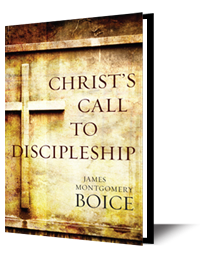
Scholars have offered various interpretations of this great tribulation. Some think this refers to martyrdom. I think this seems unlikely because there’s nothing in the passage specifically to indicate that the people in white robes were martyrs. Ordinarily, in other places in the Book of Revelation, when John refers to martyrs he comes right out and explains that they were put to death because of their faith. Others think that the tribulation refers to a special period of persecution in the end times - what Revelation elsewhere calls the hour of trial that is going to come upon the whole world. This interpretation has much to commend it, for the sufferings of these saints are described as the great tribulation.

In this week’s lessons, we’ll be looking at several verses from the end of Revelation 7. There’s a great deal in this passage. In verse 13 someone posed the following question: "These in white robes - who are they, and where did they come from?" Who are these people? And where did they come from? Those are the questions. The questioner is referring to those who appeared to John in his vision recorded here in Revelation. John had been taken up into heaven where God was revealing to him the secrets of glory, and there John saw an enormous crowd of people gathered from the four corners of the earth.

The last horse is a livid or pale greenish color symbolizing disease or death. The color there is hard to get into the English language, which is why it’s translated "pale." It’s actually the Greek word chloros, from which we get the words "chlorophyll," the substance in plants that makes them green, and "chlorine," which is a pale greenish gas. Behind this fourth pale horse comes Hades, the abode of the dead. It says these two are given power over a fourth of the earth to kill by sword, famine, and plague, and by the wild beasts of the earth.

Let me back up a moment. I describe the second horse, the red one, as symbolizing bloodshed. Almost all of the commentators agree with that in general terms, but Hendricksen narrows it down a bit. He believes that it’s bloodshed, but that it refers specifically to the persecution of Christians rather than to war and its results in general. This fits the pattern he sees in these chapters, namely, the advance of the gospel resulting in the persecution of believers, judgment on the wicked, and the vindication of God’s people.

Billy Graham, in his book Approaching Hoof Beats: The Four Horsemen of the Apocalypse, devotes three chapters to the study of false or deceptive religion, which he thinks is what's represented by this rider. The arguments he presents in support of this view are thus: first, the language of conquering is not used so exclusively of Christ as Hendricksen suggests. It’s used elsewhere of the beast in his war against the saints.


















